- Home
- > Nature online
- > The science of natural history
- > The scientific process
- > Fieldwork
- > Collecting insects
Primary navigation
Collecting insects
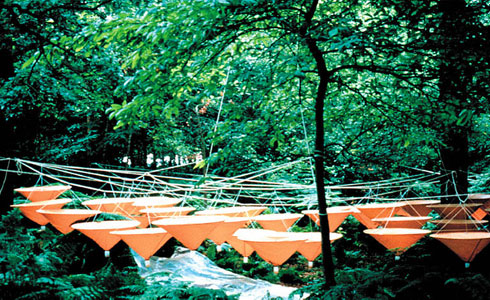
To collect insects living high up in a forest canopy, we spray or mist the trees with insecticides. The insects fall into collecting funnels (as seen) or onto sheets on the ground. The insecticides do not affect any other animals and they degrade rapidly.

This simple tent-like trap is a Malaise trap. Researchers use it to collect the smaller flying insects such as flies, bees and wasps. When the insects hit the trap they climb up to the highest, and often the brightest, point where they fall into a bottle of alcohol.

These simple cup traps are called pitfall traps and they are very good for collecting beetles. They are often baited with rotten meat or even faeces to attract beetles like Scarab beetles. The trap is buried so the lip is flush with the ground.
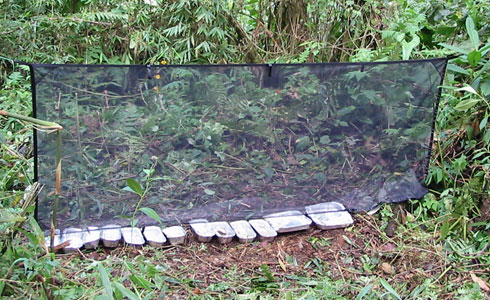
Interception traps can be used for collecting larger flying insects. A sheet or net, or something similar, is placed over a series of trays. When the insects hit the net they drop into the collecting trays below.
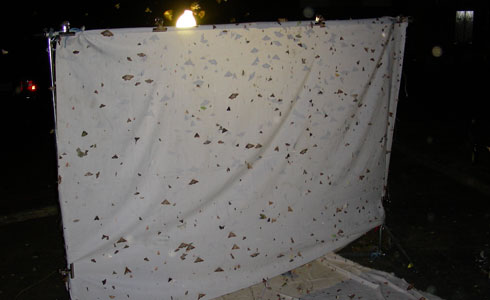
A light trap is used to collect insects at night. It can be very simple and be made of a UV light and a bed sheet. Light traps are very effective for collecting moths and beetles.

This is a pooter, or aspirator, for sucking up insects, spiders and other bugs that have been caught in a net or on a beating sheet. Pooters vary in shape and size.
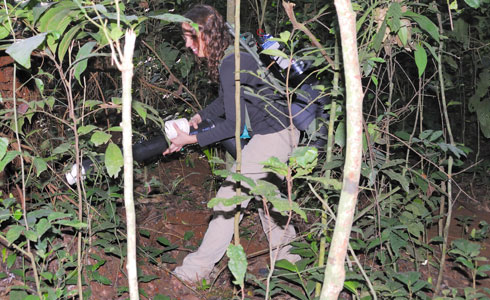
Suction samplers are good for collecting small insects that are quite mobile. Here, Museum scientist Shelley Cook is using a backpack aspirator, which is a suction sampler specifically designed for collecting mosquitoes.
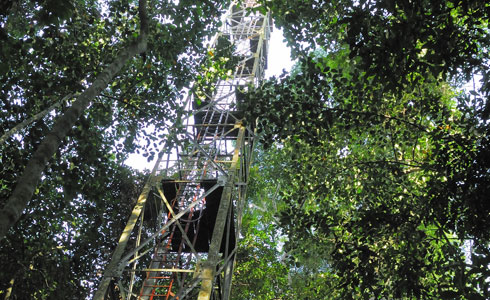
Access towers like this one allow researchers to collect insects at different heights.

A butterfly net is used for collecting butterflies and other flying insects such as flies and sawflies.
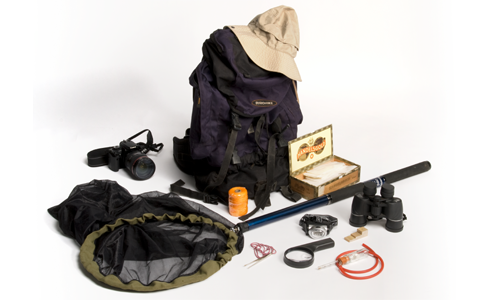
This picture includes most of the basic field equipment you need for collecting insects.
There is a net and a pooter, and the camera is useful for taking photos of sampling areas. All 3 items can be stored in zip-lock bags for protection while you are out collecting.
The rucksack holds the equipment and the broad-brimmed hat protects you from the sun. Binoculars are helpful for observing what is around you.
Other essential items are a notebook and pencil as collectors need to record the behaviour of the species, as well as the time, date, location, type of vegetation the species was found on, and other information.
Back home after the collecting trip, the insects can be pinned, and positioned correctly on the pin, using a pinning stage. There is also a magnifying glass for examining species.

As soon as they are collected, insects have to be put in alcohol to preserve their DNA, so that scientists can continue to study them back at the Museum. These insects were caught in a malaise trap and then preserved.
Related information
Toolbox
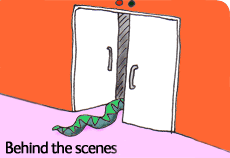
There are 27 km of specimen shelves in the Darwin Centre - the same distance as between the Museum and Junction 6 of the M1.
- Contact and enquiries
- Accessibility
- Site map
- Website terms of use
- © The Trustees of the Natural History Museum, London
- Information about cookies
- Mobile